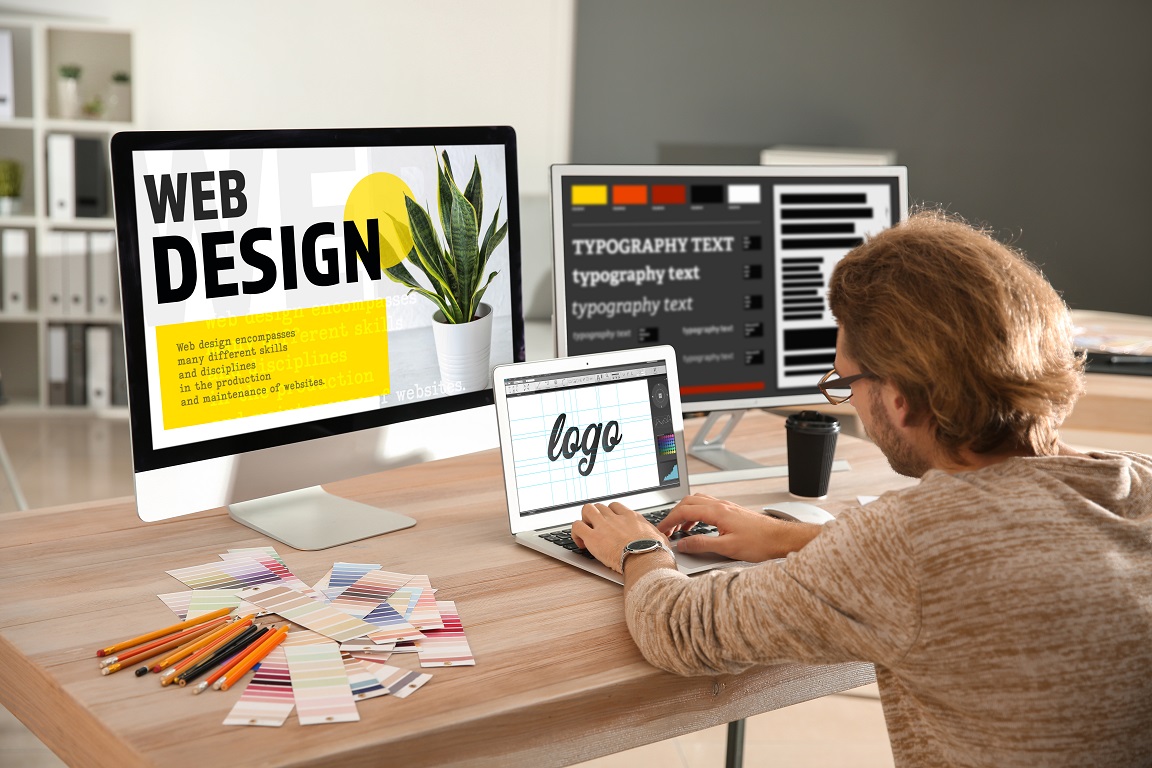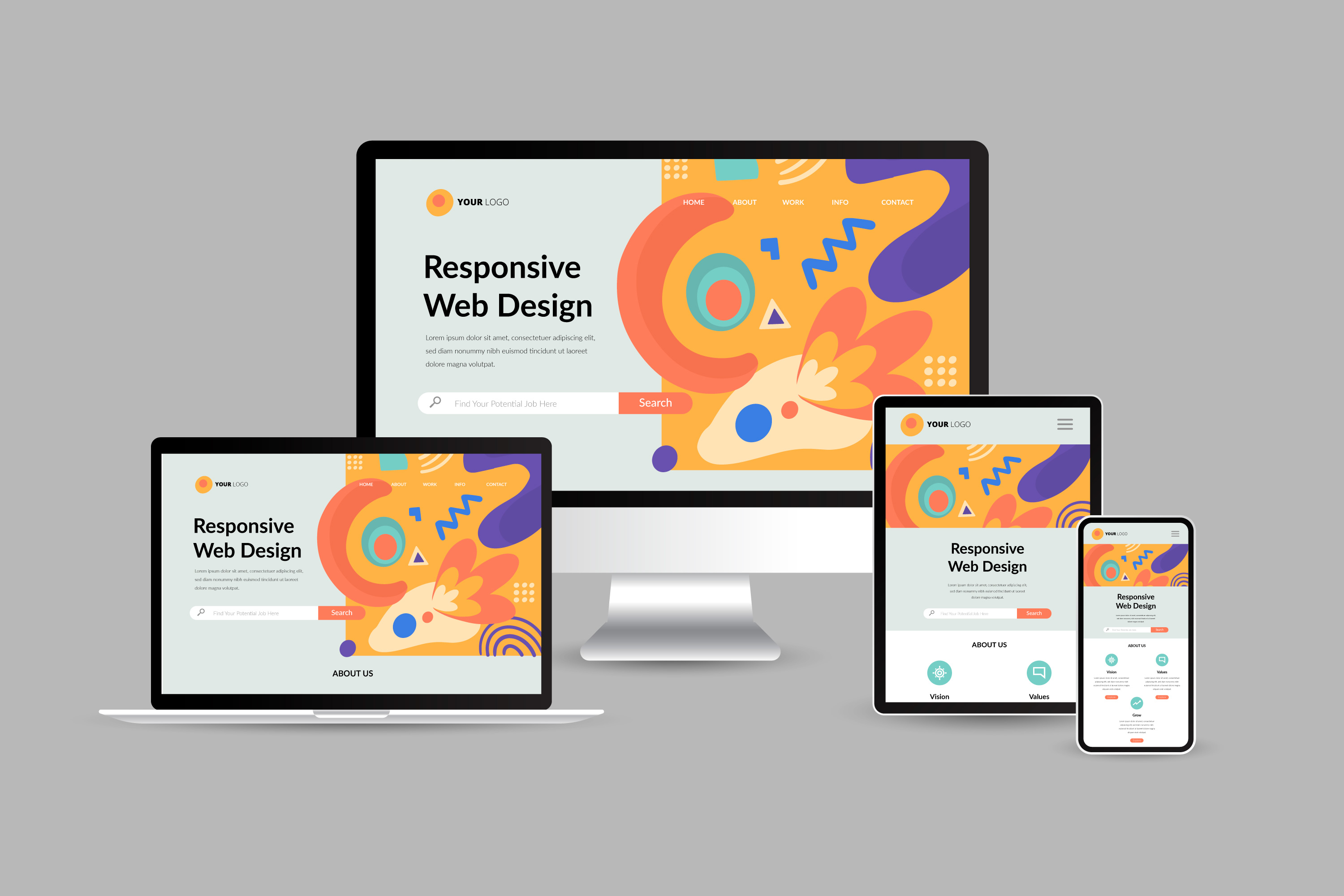Maximize Individual Experience With Ingenious Website Design Solutions
In today's electronic landscape, taking full advantage of individual experience via ingenious internet site layout options is vital for companies looking for to involve their audience successfully. The combination of interactive components can better boost the user trip, triggering a reevaluation of conventional style methods.
Understanding User-Centric Layout

To execute user-centric style successfully, it is important to conduct extensive research, including individual interviews, surveys, and functionality testing. These study techniques offer beneficial data that notifies style decisions, ensuring that the end product straightens with user expectations. Furthermore, creating customer personas can help designers envision and understand with the end-users, guiding the layout procedure towards more relevant remedies.
In addition, iterative design is a vital element of user-centric techniques. By continually testing and refining designs based upon individual feedback, developers can recognize discomfort points and locations of improvement, causing a much more sleek end product. Eventually, user-centric style is not simply a stage in the development procedure yet a continual dedication to focusing on customer requirements, resulting in even more interesting and efficient electronic experiences.
Importance of Responsive Layouts
As digital communications progressively happen across a range of devices, the value of receptive designs can not be overemphasized. A receptive layout makes sure that a website adapts perfectly to various screen dimensions, from desktop computer monitors to smart devices. This flexibility is vital in today's multi-device landscape, where customers expect a constant and appealing experience no matter exactly how they access web content.
The primary advantage of responsive style is boosted user satisfaction. When a site is maximized for all tools, it lessens the demand for zooming, scrolling, or horizontal navigating, which can discourage individuals and lead to higher bounce rates. Additionally, online search engine like Google focus on mobile-friendly internet sites in their ranking formulas, making receptive layouts necessary for effective search engine optimization techniques.
Rather of handling separate versions of a website for different gadgets, a solitary, fluid layout can be changed, saving time and sources. Ultimately, investing in responsive formats is not simply a pattern; it is a basic principle of modern-day internet design that significantly boosts individual experience and interaction.
Enhancing Navigating and Access
Reliable navigation and access are critical components of a properly designed website, dramatically affecting user interaction and contentment. A straightforward navigation framework permits site visitors to find info swiftly and with ease, decreasing disappointment and raising the likelihood of repeat gos to. Executing clear, descriptive tags for navigation links, in addition to a logical hierarchy, can assist users seamlessly through the site.
Accessibility is just as important, ensuring that all individuals, no matter their impairments or capacities, can connect with the site successfully. This can be accomplished with using appropriate color contrasts, text sizes, and alt text for images, which with each other improve the experience for aesthetically impaired users. Moreover, incorporating key-board navigating and my response display viewers compatibility broadens accessibility for customers with diverse needs.
Normal usability testing can offer important understandings into navigation efficiency and ease of access problems. By collecting responses from genuine users, designers can identify pain points and make enlightened changes. Inevitably, prioritizing navigation and ease of go access not just promotes inclusivity but additionally grows a favorable customer experience, enhancing the brand's dedication to high quality and individual treatment in a significantly electronic landscape.
Using Visual Hierarchy Effectively
Aesthetic pecking order acts as an assisting framework in site design, guiding individuals' interest to the most important aspects on a page. By strategically organizing aesthetic components such as typography, shade, and spacing, developers can develop a clear path for individuals to adhere to. This structure not just boosts individual experience but additionally improves material comprehension.
One reliable way to establish aesthetic power structure is through making use of size and range. Larger components normally bring in even more attention, making headings and vital visuals prominent. Matching this strategy with contrasting shades can additionally set apart key web content from secondary details, making certain that important information attracts attention.
Additionally, the setup of aspects plays a crucial duty in guiding individual communication. Using a grid format can produce a natural circulation, while whitespace aids to different web content and decrease cognitive load - Website Design. This intentional spacing permits users to process info a lot more easily, resulting in enhanced interaction
Finally, making use of consistent design patterns aids reinforce visual hierarchy, offering users with familiar cues as they browse the website. By prioritizing these concepts, designers can properly maximize customer experience, ensuring that site visitors can easily locate the details they look for.
Integrating Interactive Elements
The consolidation of interactive components into website design can dramatically boost individual engagement and total experience. Interactive features such as quizzes, sliders, and polls not only astound users yet also advertise energetic involvement, making the browsing experience more remarkable. By encouraging users to communicate, sites can effectively keep attention and minimize bounce prices.
Furthermore, integrating vibrant content like animations and hover effects adds an attractive layer of interactivity. These aspects can direct individuals without effort via the website, highlighting vital info and phones call to action. Animated buttons can attract focus and improve site web click-through prices.
Furthermore, customization with interactive devices such as chatbots or recommendation engines enables web sites to accommodate private choices, cultivating a sense of link. This customized strategy not just enhances customer complete satisfaction but likewise encourages repeat sees.
Incorporating analytics devices to track interactions gives beneficial insights into user actions, making it possible for continual improvement of the interactive aspects. Eventually, a properly designed interactive experience changes an easy browsing session right into an interesting journey, leading to enhanced user contentment and loyalty. Incorporating interactive elements is crucial for making best use of customer experience in contemporary internet site design.
Conclusion

In today's electronic landscape, optimizing user experience via innovative website style remedies is important for companies seeking to involve their target market efficiently. Ultimately, focusing on navigation and access not just cultivates inclusivity but also grows a favorable customer experience, strengthening the brand name's dedication to high quality and individual treatment in an increasingly electronic landscape.

In conclusion, making best use of user experience through ingenious website design solutions necessitates a commitment to user-centric principles. Website Design.